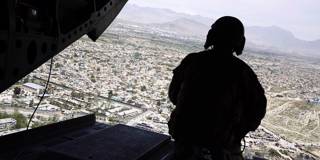After nearly two decades of sacrifice, the US is looking for a way out of Afghanistan, and Pakistan, which has provided a sanctuary to the Taliban, is seen as critical to America’s ability to withdraw its troops without enabling the group to overthrow the Afghan government. But the US cannot afford to alienate India.
NEW YORK – “Tilt” is a word with a history in South Asia. Nearly a half-century ago, Pakistan’s government brutally repressed its citizens in the eastern part of the country. Millions of refugees streamed into India, which mobilized its armed forces. Pakistan attacked, and India responded. Full-scale war ensued. When the dust settled, Pakistan had been dismembered, with its eastern part becoming the independent country of Bangladesh.
The US government watched these events unfold with concern. India’s claim to be non-aligned was not taken seriously, and President Richard Nixon and National Security Adviser Henry Kissinger judged victory for India to be a gain for the Soviet Union. In addition, the South Asia conflict occurred just as the United States (with Pakistan’s assistance) was seeking to establish a relationship with the People’s Republic of China. Nixon and Kissinger feared that China’s interest would diminish if the US appeared unwilling to stand up to India, a country backed by the Soviets and one with whom China had fought a war a decade before.
The US dispatched an aircraft carrier to the Bay of Bengal, ostensibly to deter further Indian military action, but in fact more as a signal of American support for Pakistan. The show of force did not change the trajectory of the crisis, but the US decision to tilt toward Pakistan (a phrase that made its way into newspapers) was infamous in India for decades to come.

NEW YORK – “Tilt” is a word with a history in South Asia. Nearly a half-century ago, Pakistan’s government brutally repressed its citizens in the eastern part of the country. Millions of refugees streamed into India, which mobilized its armed forces. Pakistan attacked, and India responded. Full-scale war ensued. When the dust settled, Pakistan had been dismembered, with its eastern part becoming the independent country of Bangladesh.
The US government watched these events unfold with concern. India’s claim to be non-aligned was not taken seriously, and President Richard Nixon and National Security Adviser Henry Kissinger judged victory for India to be a gain for the Soviet Union. In addition, the South Asia conflict occurred just as the United States (with Pakistan’s assistance) was seeking to establish a relationship with the People’s Republic of China. Nixon and Kissinger feared that China’s interest would diminish if the US appeared unwilling to stand up to India, a country backed by the Soviets and one with whom China had fought a war a decade before.
The US dispatched an aircraft carrier to the Bay of Bengal, ostensibly to deter further Indian military action, but in fact more as a signal of American support for Pakistan. The show of force did not change the trajectory of the crisis, but the US decision to tilt toward Pakistan (a phrase that made its way into newspapers) was infamous in India for decades to come.